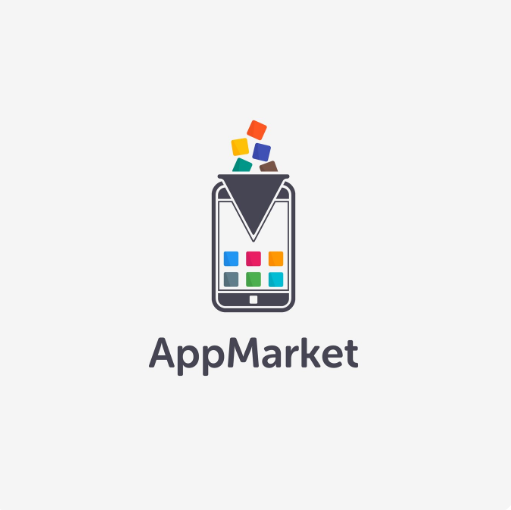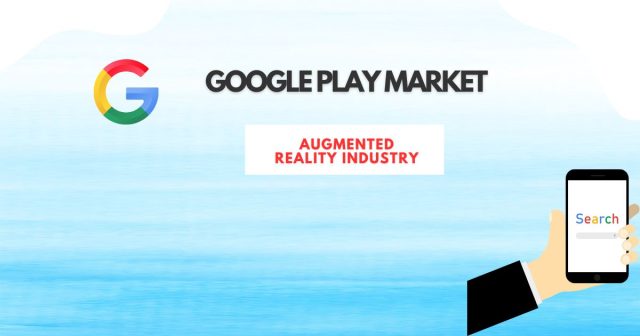Augmented Reality (AR) is no longer just a futuristic concept or limited to science fiction movies. It has become an integral part of our daily lives, from entertainment apps to e-commerce and even education. At the forefront of AR’s rapid growth lies the Google Play Market, playing a pivotal role in making AR more accessible to developers and end users alike. But how exactly is Google Play influencing the AR industry, and what implications does it have for businesses and consumers?
This blog explores how the Google Play Market has become a driving force behind AR’s expansion. By the end, you’ll better understand why AR is revolutionizing various industries and how Google’s platform accelerates innovation in this domain.
The Rise of AR and Its Growing Market Potential
Before we analyze Google Play’s role in AR, let’s briefly understand why AR technology is gaining traction globally.
AR by the Numbers
AR is projected to generate over $100 billion in global revenue by 2030, with the market already estimated in the tens of billions. Sectors like retail, healthcare, gaming, and real estate are leveraging AR for enhanced consumer engagement, training tools, and experiential marketing.
Notably, smartphone AR applications are among the largest segments contributing to this growth. With billions of smartphone users worldwide, AR apps have an unparalleled reach, making them highly scalable for developers and accessible for users.
Google Play Market’s Role in Boosting AR Innovation

For billions of Android users worldwide, the Google Play Store acts as the central hub for mobile applications. Through initiatives like ARCore, AR-friendly tools, and AR monetization strategies, Google Play acts as a catalyst for AR innovation. Here’s how:
1. ARCore: Democratizing AR Development
Launched by Google in 2018, ARCore is a development platform designed to make AR development more accessible, even for small teams or indie developers. ARCore allows creators to build AR apps compatible with a wide range of Android devices.
Key Features of ARCore:
- Motion Tracking enables apps to overlay virtual objects onto real-world environments while adapting to dynamic user movements.
- Light Estimation adjusts lighting conditions, ensuring AR visuals feel natural and immersive.
- Environmental Understanding detects flat surfaces, helping developers create seamless AR interactions.
By making ARCore’s SDK available directly through the Google Play Market, Google empowers developers to experiment with AR-based ideas, knowing they can meet a global user base.
2. Massive Distribution Network
With billions of active Android devices globally, the Google Play Market provides unparalleled distribution capabilities for AR apps. Whether a hobbyist developer or a Fortune 500 company, apps listed on Google Play can instantly reach users in over 190 countries.
For AR projects, this offers a unique opportunity to gather real-world user feedback, iterate quickly, and scale operations in ways that were difficult to imagine even a decade ago. The ease of global distribution reduces entry barriers, enabling AR apps to thrive in competitive markets.
3. Monetization Opportunities for AR Experiences
One of the challenges for AR developers has been monetizing their projects effectively. Google Play has emerged as a solution by facilitating multiple revenue models for AR apps.
Common AR Monetization Models on Google Play:
- Freemium Apps (e.g., basic AR experiences with in-app purchases for premium content).
- Ad Revenue (Embedding AR into gamified advertising campaigns).
- Subscription Models (Popular among fitness or professional tools leveraging AR).
For example, apps like “Pokémon GO” turned AR into a lucrative business model, and a key version of the app found its home on Google Play.
4. Encouraging User Adoption Through High-Quality Apps
Google Play’s robust guidelines incentivize developers to build sophisticated and reliable AR apps. By prioritizing quality and compatibility, it ensures users get access to seamless experiences. High-ranking AR applications like “Snapchat,” “IKEA Place,” and “Houzz” all set benchmarks for smoother AR integration, motivated by Google Play’s rules and feedback loops.
Examples of Success Stories Driven by Google Play
Here are real-world examples of how AR applications on Google Play have redefined industries:
Gaming
AR has revolutionized mobile gaming over the years. Games like Pokémon GO (developed by Niantic) became global phenomena by seamlessly merging real-world exploration with digital elements. The app benefits immensely from Google Play’s distribution network, particularly in its ability to engage millions of users through updates and events.
Retail
Apps like IKEA Place allow users to visualize furniture in their homes before purchasing. By leveraging AR, retailers deliver more value to customers, reducing purchase hesitation and product returns. Availability on Google Play further amplifies these apps’ reach among Android users.
Education
AR transforms education into an interactive experience. For example, apps like Human Anatomy Atlas AR allow students to explore the human body in 3D, providing a richer understanding than traditional textbooks. Google Play ensures easy accessibility for educators worldwide.
Real Estate
Platforms like MagicPlan use AR to help architects and homeowners visualize real estate layouts, straight from their smartphones. Apps like these thrive due to Google Play’s massive user base spanning diverse professional fields.
The Broader Impact of Google Play Market on AR Expansion
Google Play’s ecosystem doesn’t just exist in isolation. By encouraging innovation and providing AR-focused resources, the platform creates ripple effects benefiting developers, businesses, and end consumers. Below are some of the broader impacts:
For Developers
- Simplified access to a global audience ensures competitive opportunities for AR creators.
- ARCore tools allow faster prototyping and iterations, cutting development costs.
- Monetization features create viable paths for developers to make sustainable incomes.
For Businesses
- Businesses launching AR-enabled apps on Google Play can boost customer engagement and retention.
- Google Play’s analytics and feedback systems help enterprises refine their apps for better performance.
For Consumers
- AR-friendly apps enrich users’ lives with features ranging from home try-ons to virtual gaming to immersive art experiences.
- With Google Play’s built-in payment integrations, buying AR-enhanced apps or in-app content is seamless and secure.
Final Thoughts on AR and Google Play’s Role in Shaping the Future

Augmented Reality is not just a technological trend; it presents a fundamental shift in the way we interact with digital and physical spaces. By leveraging the Google Play Market’s tools, distribution, and community, AR is becoming more pervasive, functional, and accessible.
Whether you’re an aspiring developer or a business hoping to integrate AR solutions, the opportunities are endless. Explore the potential of AR by taking full advantage of platforms like Google Play.

